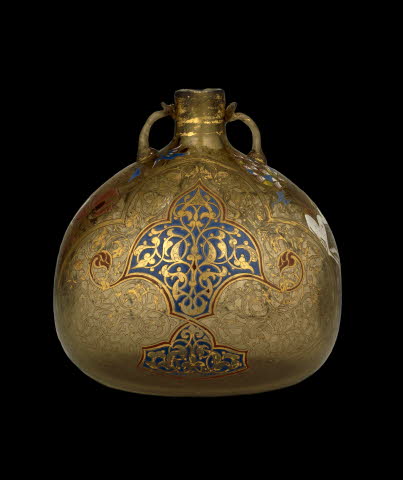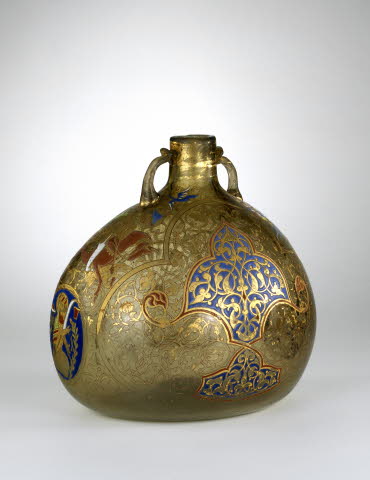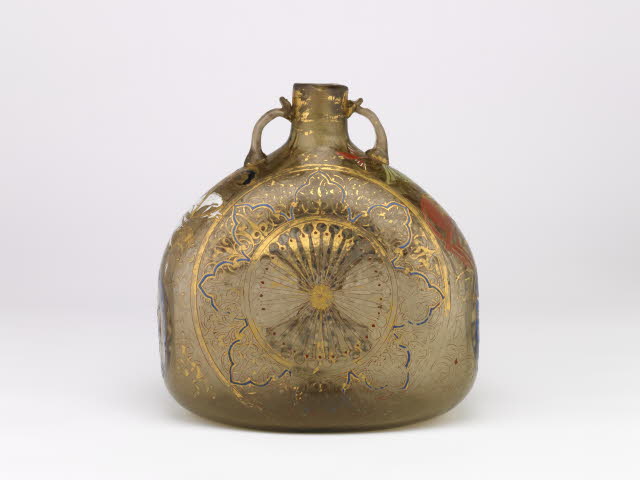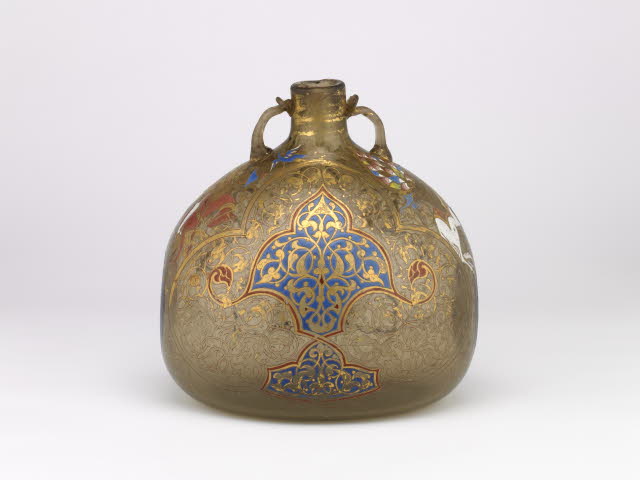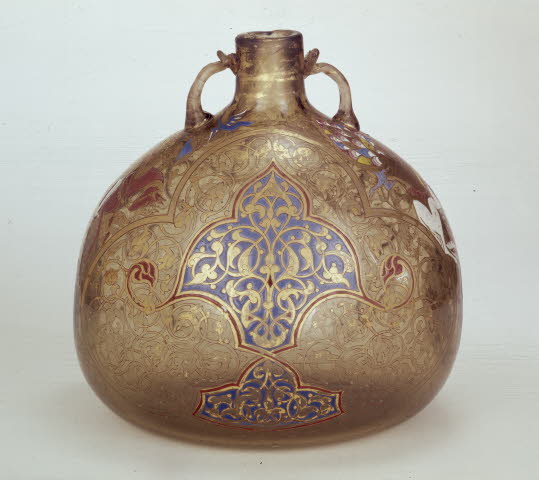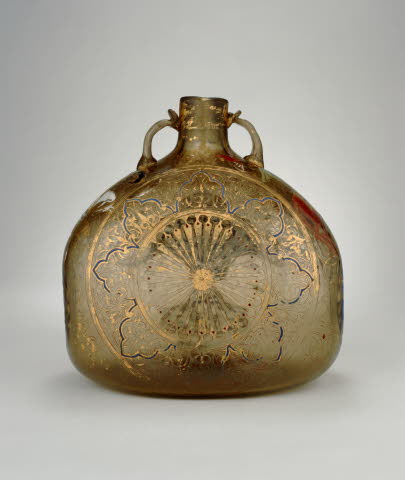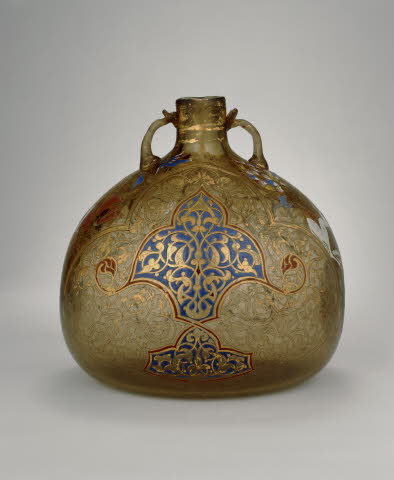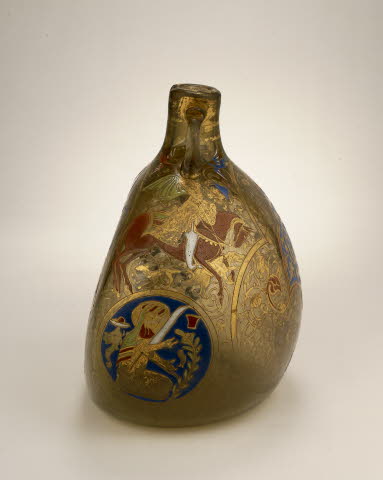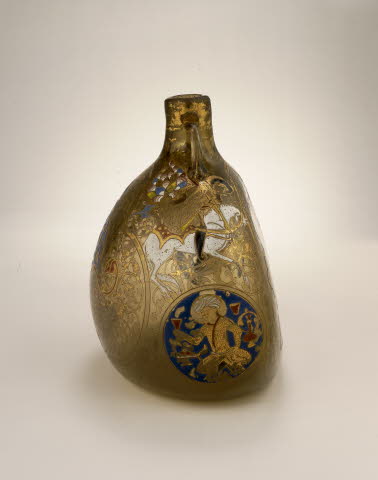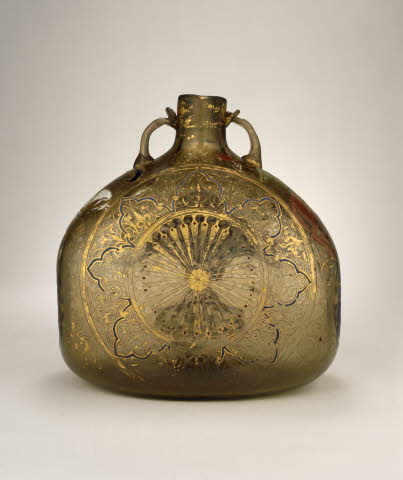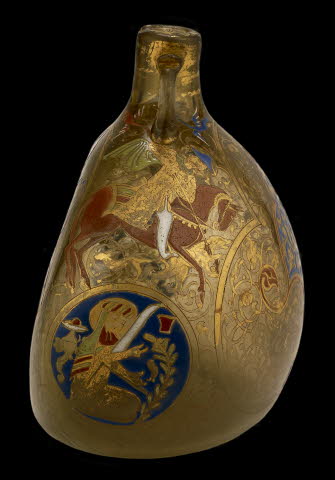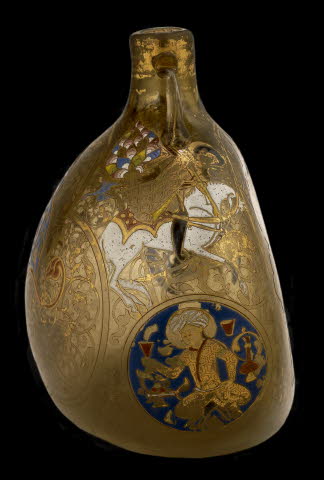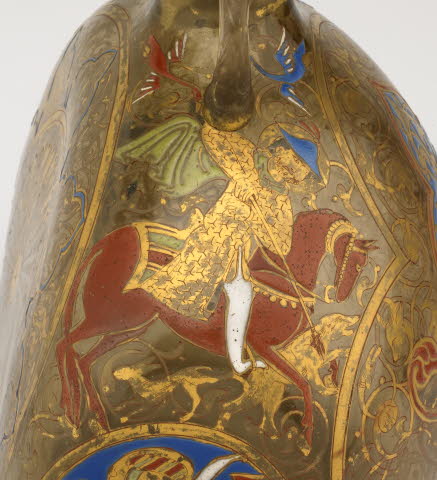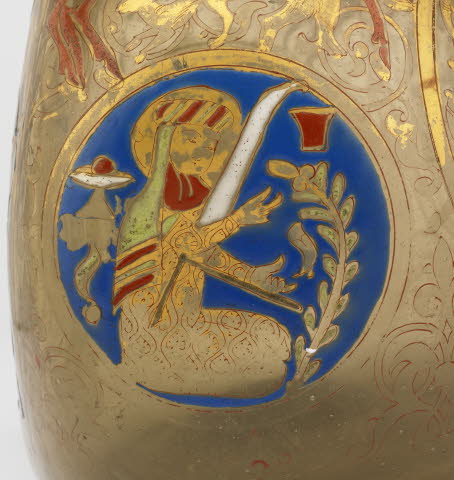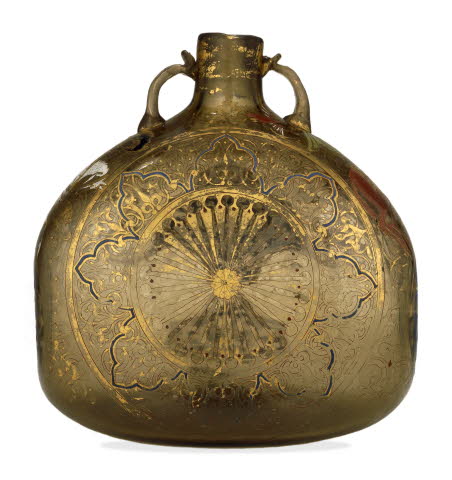Water-flask, pilgrim flask
BackDescription:
Glass water-flask in the shape of a pilgrim's flask; gilded and enamelled decoration.
Object type: | water-flask, pilgrim flask |
Museum number: | 1869,0120.3 |
Culture/period: | Ayyubid dynasty |
Date: | 1250-1260 (circa) |
Production place: | Made in: Syria |
Materials: | glass, gold |
Technique: | gilded, enamelled |
Dimensions: | Length: 23.00 cm Height: 23.20 cm Width: 15.20 cm |
Location: | 10 |
Exhibition history: | Exhibited: 2014 Sep-2015 Jan, BM WCEC, 'Ming: 50 years that changed China' 2012 24 May - 30 Sep, London, BM, 'The horse: from Arabia to Royal Ascot' 2010 29 May-15 Oct, USA, Kentucky Horse Park, 'A Gift from the Desert' 2002 20 Feb-15 May, Greece, Athens, Benaki Museum, 'Glass of the Sultans' 2001 17 Sep-2002 14 Jan, USA, New York, The Metropolitan Museum of Art, 'Glass of the Sultans' 2001 24 May-2 Oct, USA, Corning, Corning Museum of Glass, 'Glass of the Sultans' 1996, 'Furusiyya' (cancelled) 1976, Hayward Gallery |
Acquisition names: | Bequeathed by: Felix Slade (executors of) |
Acquisition date: | 1869 |
Curator's comments:
Enameling on glass is one of the major achievements of glassmakers in Cairo and Damascus. The designs on this flask reflect multiple influences. The warrior saints on the sides are drawn from Christian imagery, with their Crusader-style garments and headdress. The rest of the design, including the female harpist and turbaned man in the roundels below, conforms more to scenes of courtly life in medieval Islamic societies often depicted on objects. The intricate vegetal ornament has the additional feature of human and animal heads emerging from the ends of the scrolls, a feature known as 'waqwaq'. Glass canteens are neither common nor is glass a particularly obvious material for making containers of this type. However, a fragmentary colourless cut glass canteen decorated in relief with animals, birds, palmettes and other motifs, attributed to the 9th-10th century and possibly found in Iran, exists in Corning (1955.1.125; cf. David Whitehouse, 2010: 'Catalogue of the Islamic Glass in Corning, Volume 1', Corning, pp.231-33, cat.388). In both cases, one sees outstanding work by glass artists of the Islamic period who have borrowed a form more common in other media such as metal work and ceramics.
